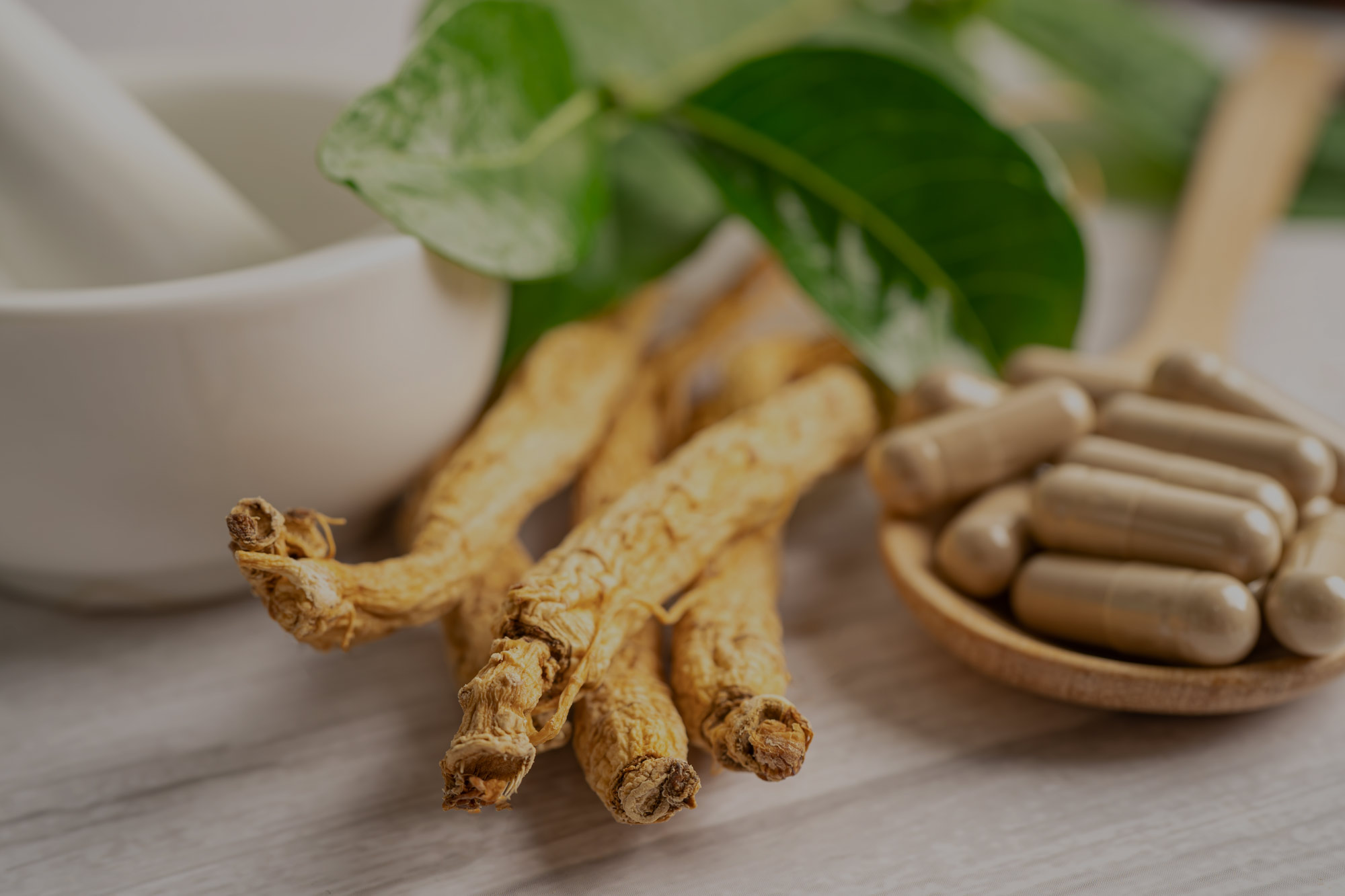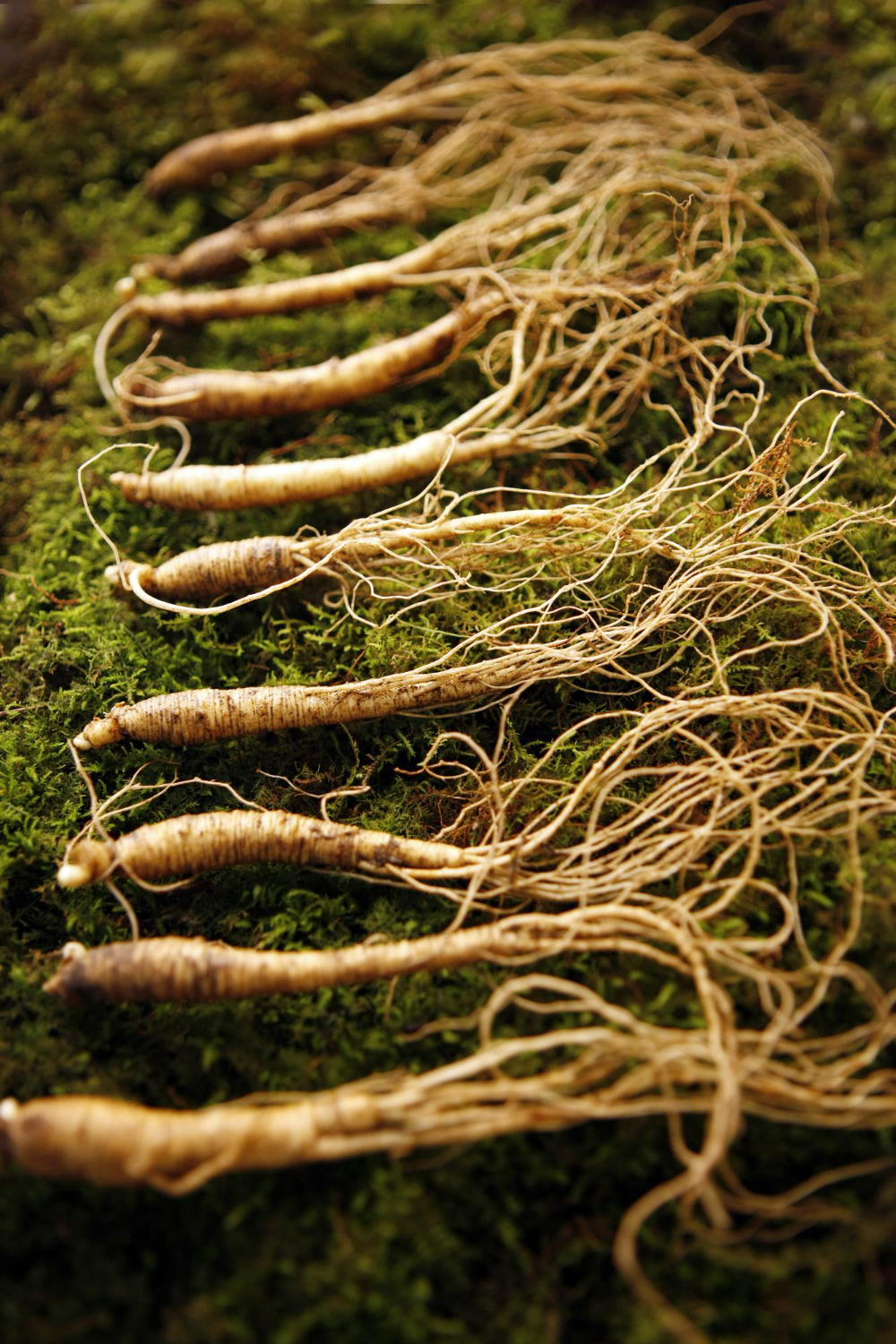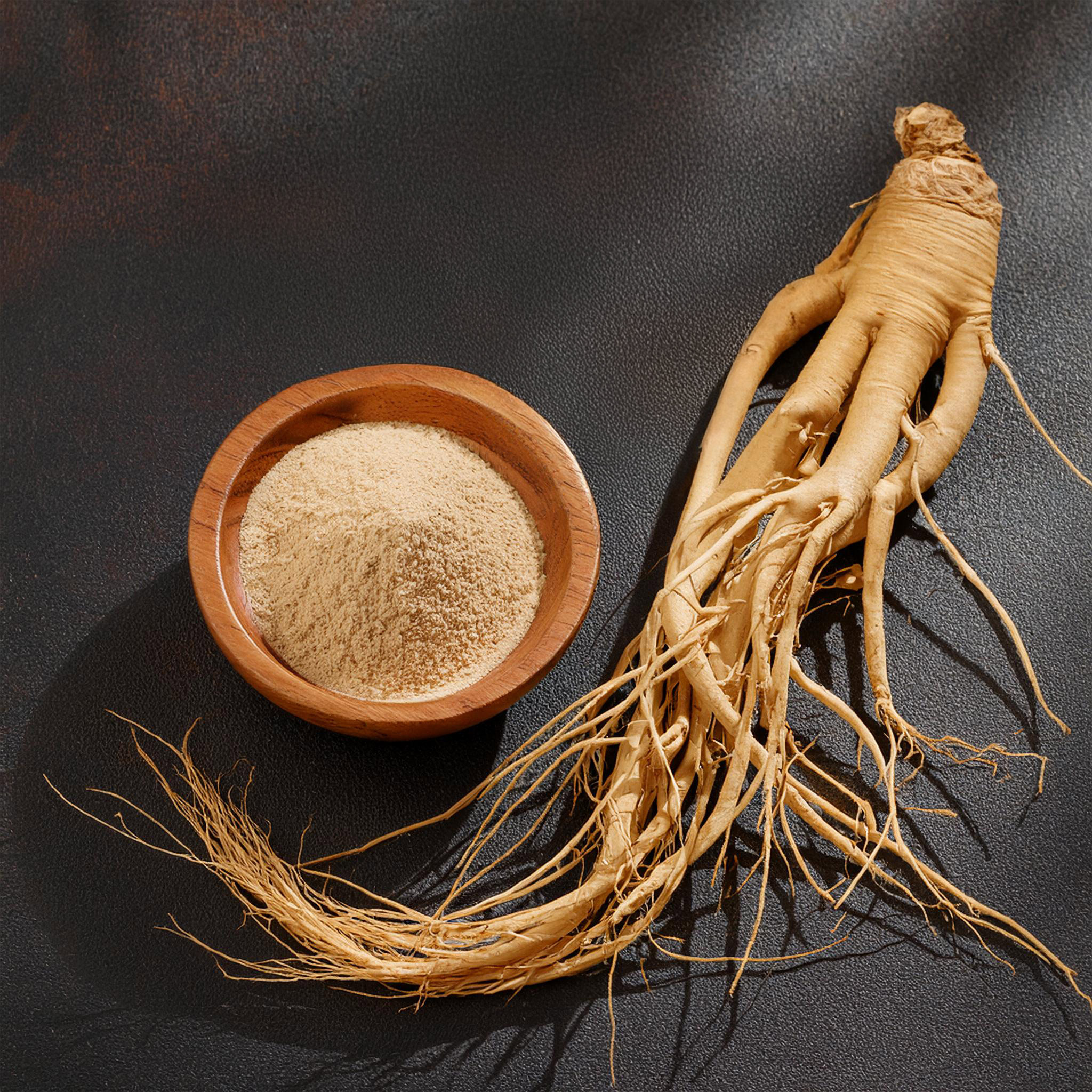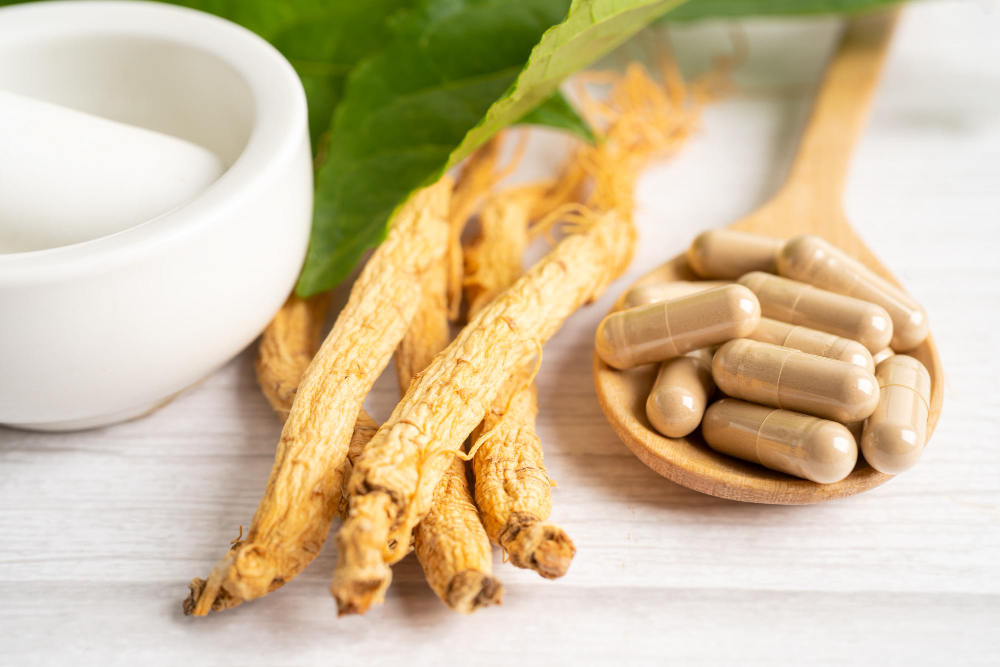
Description and origin
Ginseng or Panax ginseng C.A Meyer is a perennial plant of the Araliaceae family, characterized by compound leaves and a fleshy root. It is native to East Asia, where it has been cultivated for several millennia. In fact, the word “ginseng” comes from the Chinese word “renshen”, meaning “root man” because of its shape, which resembles that of a human body, and “Panax” means “healer of all” in Greek. It has always played an important role in traditional Chinese medicine.
Its leaves and roots can be eaten, but it is the phytochemical activity of the roots and its ginsenosides that have been extensively studied.
A plant that requires patience…
Panax ginseng is a plant that needs time to grow. You need to wait at least 5 years before you can harvest it between September and October, so that it reaches the necessary richness in ginsenosides.

A long-standing partnership
For more than 15 years, we have been working with our Chinese partner on the cultivation of Ecocert-certified organic and conventional crops in northeast China.

Ideal growing conditions
Ginseng prefers light, well-drained, acidic soil. It needs a cool, moist environment to flourish undisturbed.

Rest and reforestation
As Panax ginseng tends to impoverish the soil, a rotation system is used to avoid sterilizing the soil. After Panax ginseng production, the land is put to rest by planting trees for a minimum period of 10 years.

Shading and organic fertilizers
The seeds are planted and covered with tarpaulins to create shaded areas. This is necessary to avoid burning the leaves. Only organic fertilizers are used on the land.
Transformation
In our line of business, we transform leaves and roots into extracts, enabling us to offer different ingredients depending on the part of the plant used or the ginsenoside content. Leaves have a higher ginsenoside content than roots.

Ginseng extraction
Leaves and roots are processed independently, so that only one part of the plant is used, and they are not mixed together.
After harvesting, the roots and leaves are washed, dried and cut. They are also analyzed for active ingredient content, and checked for contaminants.
Once the raw materials (roots or leaves) have been selected, a hydroalcoholic extraction is carried out, with concentration and filtration stages so that the solution can be spray-dried to obtain a powder. Extraction by-products are used to make paper or animal feed.

Enhanced quality control
At the end of the production cycle, samples are taken and analyzed in on-site laboratories via our Chinese subsidiary, as well as in first-rate laboratories in Europe. The extract must meet our quality standards.
Botanical identification is determined according to the European Pharmacopoeia method. We control over 550 pesticides (Reg CE 396/2005 and its amendments) on the extract ready for packaging.
We analyze other contaminants, including heavy metals and Polycyclic Aromatic Hydrocarbons (PAHs) in accordance with EU regulation 2023/913.

Benefits of Panax ginseng
Panax ginseng has many health benefits. The best known are, without doubt, its stimulating properties, both physically and cognitively. It helps combat fatigue and contributes to the body’s resistance to stress. This is the principle of an adaptogenic plant: to help the body improve physical and mental resilience.